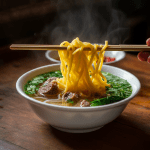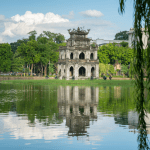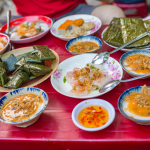in collaboration with Dagiac
Famed for its karst towers, sunken mountains, viridian hills and flowing rice terraces, Northern Vietnam is a place like no other.
With many areas vastly unchanged by modern tourism, the northern country is a welcome escape from the bedlam of the more populous southern cities. Whether you are looking to escape to the countryside or explore the urban jungle, Northern Vietnam has plenty to offer.
HANOI – SAPA – HA LONG – NINH BINH
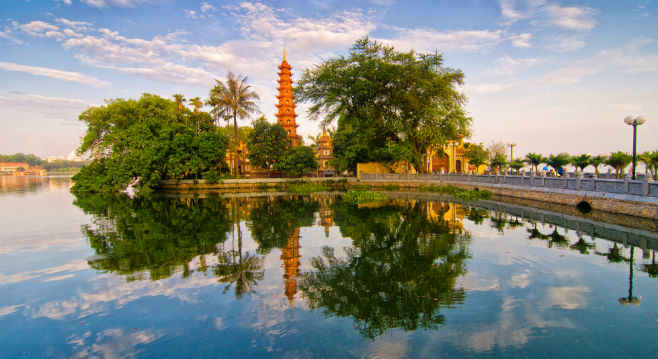
Beautiful pagodas are just one of the many things to appreciate in Hanoi
The capital city of Vietnam is a fascinating place to visit and observe, especially at this point of its rapid development and opening up to the rest of the world. Evidence of Chinese and French occupation remains at every turn, subtly incorporated into what is now very recognisable as modern Vietnamese culture. The chaotic dance of traffic downtown billows and breaks as the main streets are swallowed by the winding alleys for which Hanoi has become famous. The Old Quarter boasts the original building faces and streets of years gone by and is where you will find a whole host of delicious eats. Not only is this is the home of Vietnam’s ubiquitous pho, you can find delectable flavours in just about every traditional street food dish offered up by the real-deal food hawkers.
If you’d relish the chance to experience Hanoi from a local’s point of view, try jumping on one of the distinctive Vespa Tours, where you’ll get to cruise through the city with a guide who will show you all the best spots in town. These guys have already set up in Ho Chi Minh City, Hoi An, Hue, Siem Reap, and Phnom Penh, so you can trust with that kind of experience that they know just the best way to show you Hanoi. The tours are designed to show you the cities’ highlights in terms of culture, people and food- so you’re sure to get a complete and authentic view of Hanoi…and on the back of a Vespa? Doesn’t get cooler.

Halong Bay is quickly becoming SE Asia’s most visited tourist destination
The legendary limestone stacks of Halong Bay’s submerged mountain range have become one of the most sought after travel destinations in the world. Each year, millions of tourists travel from around the world to explore the ethereal karsts and emerald waters. With the rapid increase in the number of tourists comes the rapid development of facilities to match. There are currently close to 100 different cruise companies operating in Halong Bay, all of whom offer a variety of wonderful cruise options worth considering. Traipsing through the floating villages inhabited by the indigenous Halong people, midnight squid fishing, and exploring ancient caves laden in folklore are just a few of the things you can do there. If you’re feeling adventurous, you can rent out your own private kayak (many of the secluded beaches and caves are only accessible this way), which means you may just be able to see some of Halong Bay that most others have not. Stay overnight on one of the cruise ships if you have the time, it’s indisputably the best way to get the full Halong Bay experience. Trust me, there isn’t a view in the world that beats waking up to the sun rising in Halong Bay.
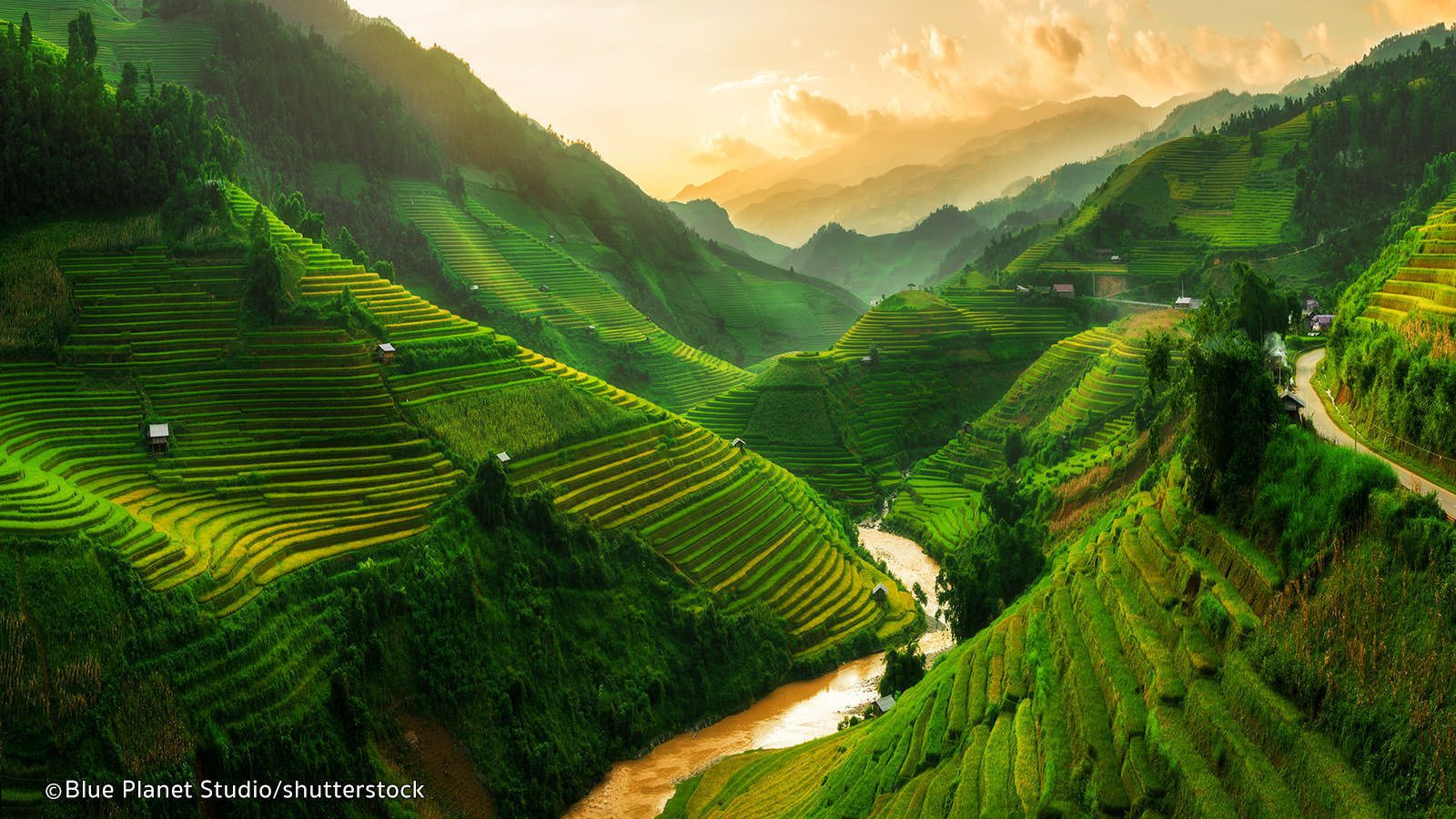
Sapa’s distinctive rice terraces are unique to the area
Sapa is now the tourism center of northwest Vietnam, revered for it’s rippling rice terraces and dramatic misty scenery. The town of Sapa itself has undergone unprecedented development in recent years thanks to the tourism boom, so the quaint traditional town it once was has morphed into something admittedly more modern and high rise. But lying just outside the town is the ethereal scenery that you come to Sapa for, the tiered rice terraces and evergreen hills that peak in the clouds and fall into deep valleys below. The days are often misty out in the highlands, which serves, if anything, only to make the landscape even more picturesque. The colourful weaves worn by the local hill tribes bring a striking burst of colour to the varying greens and muted greys of the countryside. Home to Vietnam’s highest peak (measuring in just over 3,000 meters) this is Vietnam’s primary trekking location. Going on a tour is the most efficient way to plan a trek in Sapa (you’ll get your transport, food, accommodation and a guide included usually). If you’re lucky enough to get a clear day, you’ll be graced with panoramic views of the rice terraces and mountainside orchards.
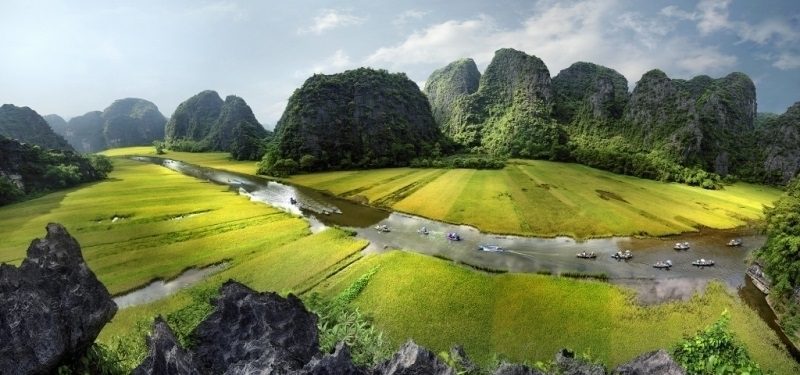
Also known as the inland version of Halong Bay
This is where the karst landscape of Halong Bay moves inland, and though the natural beauty rivals that of its waterborne cousin, far fewer tourists venture here. About 100km south of Hanoi, Ninh Binh homes Vietnam’s largest pagoda and the UNESCO World Heritage recognised Trang An grottoes. The undisputed best way to see Ninh Binh is to rent yourself a bike and cruise around to the outlying territories, that’s where you’ll find the stunning scenery- the towering karst landscape, the impossibly green rice paddies, and the beautifully constructed ancient temples. If you aren’t worried about getting wet, rainy season is the time when these fields are at their greenest- and there tend to be fewer tourists too.




